Creeping Phlox, Quick Carrots, Let’s Eat Dandelions and Pruning Hydrangeas

Spring arrived on schedule in our zone 5 garden, then it decided to go on vacation. So now we get snow showers, chilly nights and flowers that are in suspended animation. It will change and I’m okay with the slow down. Things were moving along quite fast there for awhile.
One plant that’s showing lots of life is the creeping phlox. This is one of the first perennial flowers to bloom in spring and the colors put on quite a show. I talk about varieties and growing creeping phlox here.
I’m planning our vegetable garden area, thinking about crop rotation and what to plant where. One root crop I like to spread around is carrots. There are lots of quick maturing carrots on the market that allow you to succession plant these roots having fresh carrots from summer into winter. I talk about growing carrots in this newsletter.
Our spring eating doesn’t just consist of what we plant. I like to forage for wild edibles. Right now I’m munching on winter cress, but soon it will be dandelions. While we all know the yellow flowered dandelions in lawns and meadows, there’s also cultivated versions with blue flowers that make great garden plants. I talk about why to eat them and how to grow them here.

Spring is also pruning time and the one shrub that always perplexes gardeners is the hydrangea. I try to help by offering suggestions on when and how to prune each type of hydrangea in this newsletter. If you want more on hydrangea growing and pruning, take a look at my Growing Hydrangeas and Lilacs Webinar. It’s perfect for this time of year.
Until next time I’ll be seeing you, in the garden.
Charlie

Where to Find Charlie: (podcasts, TV and in-person)
- In the Garden (WCAX-TV CBS) – This week: Japanese Gardens
- All Things Gardening on Vt Public Radio– This week: Protecting Bulbs
- WJOY In The Garden Podcast– This week: Lawn care, wood chips, pruning geraniums, electric fences and more
- Where’s Charlie Speaking? 4/5/25- Charlotte VT Library: Talk on Ecological Gardening
How to Grow: Creeping Phlox

While spring flowering bulbs put on quite a show, the first major perennial flower to bloom in spring in our area is creeping phlox. Creeping phlox (Phlox subulata) is a perennial ground cover that flowers in colors ranging from white to purple. It’s stunning to see this perennial flower in full bloom in spring. It grows well in full sun on well-drained soil and looks particularly beautiful creeping over a stone wall or in front of a garden bed.
Some varieties to try of this beauty include ‘Amazing Grace’ (white flowers with a red center), ‘Emerald Pink’ (pink flowers), ‘Scarlet Flame’ (red) and ‘Purple Beauty’ (fragrant purple blooms). This hardy evergreen slowly creeps along the ground covering the soil and preventing weed growth. It also is deer and rabbit resistant and drought tolerant. The flower show in spring is unparalleled, but after the blooms fade, the plant has a nice green, spiky foliage. Creeping phlox has few problems.

Grow creeping phlox interplanted with other low growing plants, such as creeping sedum and portulaca. In this way you’ll have some color in summer and fall as well. It’s best grown cascading over a low wall, down a slope, under deciduous trees where it will flower before the leaves come out and even in a container. The plant can be divided after flowering after a few years and new plants can be spread around the garden. The flowers also attract bees and butterflies.
Learn More About Growing Phlox here
How to Grow: Carrots

Carrots are one of home gardener’s favorite vegetables. They certainly are a great kids garden vegetable not only for the flavor, but also for the surprise kids have when they find they grow underground. There are many varieties of carrots that are orange, purple, red, yellow and even white colored. Some varieties are large and good for storage, while others are small and perfect for heavy clay soils or containers.
A trend in carrot growing is smaller carrots that mature quickly, yet are sweet. They’re perfect for snacking. Varieties, such as ‘Kinko Hybrid’, ‘Adelaide’ and ‘Atlas’, are good examples of this type of carrot. These carrots can be picked when small, about 1 month after sowing. They will have developed their sweet flavor by then. Or you can wait another few weeks and harvest them full size, (around 3 to 4 inches long). Some, such as Atlas’, are unique in that they’re short, round carrots. This trait helps when growing them in clay soils or containers. Like baby carrots, round carrots sweeten up quickly.

Carrots grow best in well drained soil. In fact, if your carrots are forked or not uniform in size, it’s usually because the soil is too compacted or has many stones and debris. Also don’t add too much nitrogen fertilizer or compost or your carrot roots will be deformed. Raised beds are best used for these reasons when growing carrots. Carrots produce well in full sun, but also tolerate part shade. The roots just may take longer to mature in part shade.

Johnny’s Selected Seeds
These baby carrots can be harvested when fully colored and small. They develop their sweet flavor sooner than main season or storage carrots. This gives you the opportunity to succession plant carrots. Start by broadcast seeding a crop, with radish seed mixed in, on a raised bed in spring once the soil dries. The radishes germinate faster breaking up the soil for the carrot seed. You can also grow these carrots around slow growing, warm season vegetables such as peppers, tomatoes and eggplants. By the time the bigger plants shade the area, you’ll have harvested your carrots. Plant a second crop in late spring for a summer harvest and again in late summer for a fall harvest. In summer, shade the area and keep the soil evenly moist for best germination. These small, baby carrots grow great in containers as well.
Learn More about growing carrots here
Let’s Eat Dandelions

One of the joys of spring for me is foraging for wild greens. Right now I’m eating winter cress greens. This green has a slightly bitter flavor, which I love. Soon, though, I’ll be foraging the main crop, dandelions. When I say we should eat our dandelions I’m talking about the wild ones with yellow flowers and the cultivated ones you can grow in your garden. The wild dandelions have tender leaves in spring with little bitter flavor. Once it gets warm, and the flower buds form, the flavor goes downhill fast. Sometimes you can get a nice fall crop of new plants once the weather cools.
Another way to eat dandelion greens is to grow cultivated varieties. Varieties, such as ‘Clio’, ‘Catalogna Special’ and ‘Italika Red’, are beautiful plants and tasty. These varieties are in the chicory family. The leaves are large, more upright and less bitter than the wild type. The best thing is they can be eaten all summer long. In fall, sometimes you’ll get a blue flower forming. But generally, the cultivated dandelions are short lived perennials. They will self sow if you let the spent flower set seed, so you can potentially have dandelions for years in your garden.
The leaves are best eaten in spring and fall when tender. Cutting them regularly produces more tender new leaves. The older leaves can be tough. I sautee the greens with garlic, onions and olive oil, steam and roast them. The flavor never gets bitter. They’re a nutrient dense green that’s good for you, too.
Sow dandelion seeds in spring after danger of frost has passed. I sow them with other long season greens such as Swiss chard, collards and kale. Keep harvesting to get new growth. Protect the plants in winter in cold areas with mulch and they will pop back up in spring. The only problem I’ve had with dandelions is mice and voles love the roots. I now grow them on a raised bed with hardware cloth underneath to deter these critters.
Go here for more on Dandelions
In Our Garden: Pruning Hydrangeas
Late winter is a good time to prune fruit trees, grapes, blueberries and some shrubs. Often gardeners get confused about which shrubs should be pruned now. This is particularly puzzling when talking about hydrangeas. Some hydrangeas are pruned now and some after flowering in early summer. Knowing which hydrangea you have helps you decide when to prune, but you can also know when to prune by knowing when your plant blooms.
In general, if your hydrangea blooms in late spring or early summer it should be pruned after flowering. These include the blue hydranges (H. macrophylla), oakleaf hydrangea (H. quercifolia) and climbing hydrangea (H. petiolaris). If your hydrangea blooms in mid summer to fall, then you should prune it now. These include the panicle hydrangea (H. paniculata) and arborescens hydrangea (H. arborescens). These bloom on the new growth in spring. The reblooming blue hydrangeas, such as Endless Summer’, should be pruned in early summer after flowering even though it produces flowers in late summer, too.
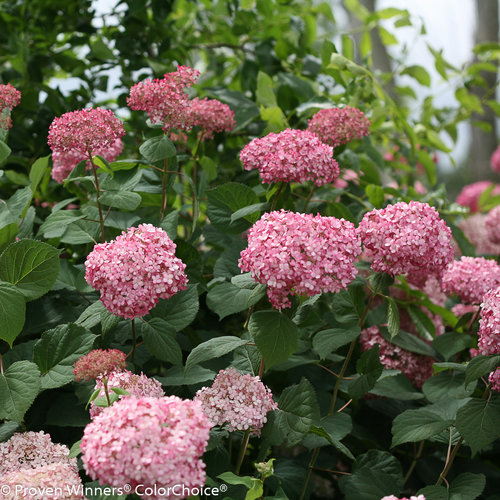
For the hydrangeas that you prune now, be aggressive. The arborescens hydrangeas, such as ‘Annabelle’, can be pruned to about 2 feet tall. This will give the new growth some support and the flowers will be less likely to flop in summer. The panicle hydrangeas, such as ‘Quick Fire’, can be large shrubs that look like trees. They can be pruned by 1/3rd to 1/2 their size now. Leave a nice branch structure to support all the new growth. It’s on this new growth where the flowers will form in late summer. You can dead head these spent flowers in winter or leave them until spring to add a little winter interest to your garden.
For more on growing hydrangeas and lilacs, check out my webinar.
Go here to learn more about Pruning Hydrangeas
Check out my Growing Lilacs and Hydrangeas Webinar here



